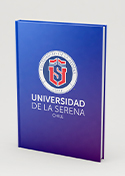Ciencia de los Alimentos
Permanent URI for this collection
Browse
Browsing Ciencia de los Alimentos by Author "Ah-Hen Kong Shun"
Assessment of Bio-Compounds Content, Antioxidant Activity, and Neuroprotective Effect of Red Cabbage (Brassica oleracea var. Capitata rubra) Processed by Convective Drying at Different Temperatures
(MDPI, 2023/09/01) Vega-Galvez Antonio; Gomez-Perez Luis S.; Zepeda Francisca; Vidal Rene L.; Grunenwald Felipe; Mejias Nicol; Pasten Alexis; Araya Michael; Ah-Hen Kong Shun
Parkinson's disease (PD) is the second most common neurodegenerative disorder, and no efficient therapy able to cure or slow down PD is available. In this study, dehydrated red cabbage was evaluated as a novel source of bio-compounds with neuroprotective capacity. Convective drying was carried out at different temperatures. Total phenolics (TPC), flavonoids (TFC), anthocyanins (TAC), and glucosinolates (TGC) were determined using spectrophotometry, amino acid profile by LC-DAD and fatty acid profile by GC-FID. Phenolic characterization was determined by liquid chromatography-high-resolution mass spectrometry. Cytotoxicity and neuroprotection assays were evaluated in SH-SY5Y human cells, observing the effect on preformed fibrils of alpha-synuclein. Drying kinetic confirmed a shorter processing time with temperature increase. A high concentration of bio-compounds was observed, especially at 90 C-degrees, with TPC = 1544.04 +/- 11.4 mg GAE/100 g, TFC = 690.87 +/- 4.0 mg QE/100 g and TGC = 5244.9 +/- 260.2 mu mol SngE/100 g. TAC degraded with temperature. Glutamic acid and arginine were predominant. Fatty acid profiles were relatively stable and were found to be mostly C18:3n3. The neochlorogenic acid was predominant. The extracts had no cytotoxicity and showed a neuroprotective effect at 24 h testing, which can extend in some cases to 48 h. The present findings underpin the use of red cabbage as a functional food ingredient.
Combined Effect of High Hydrostatic Pressure and Proteolytic Fraction P1G10 from Vasconcellea cundinamarcensis Latex against Botrytis cinerea in Grape Juice
(MDPI, 2023/09/01) Torres-Ossandon Maria Jose; Castillo Luis; Uribe Elsa; Bilbao-Sainz Cristina; Ah-Hen Kong Shun; Vega-Galvez Antonio
The effect of high hydrostatic pressure (HHP) and the proteolytic fraction P1G10 from papaya latex was studied to find out whether a synergy exists in the growth inhibition of Botrytis cinerea in grape juice, contributing to the improvement of conservation techniques and extending the shelf life and quality of food products. Grape juice (GJ) diluted to 16 degrees Brix with a water activity (a(w)) of 0.980 was prepared from a concentrated GJ and used in this study. Results indicated a 92% growth inhibition of B. cinerea when exposed to 1 mg/mL of P1G10 and 250 MPa/4 min of pressure treatment. The proximate composition and antioxidant compounds present in the GJ were not significantly affected after the treatments. Eight phenolic compounds and two flavonoids in GJ were identified and quantified, with values fluctuating between 12.77 +/- 0.51 and 240.40 +/- 20.9 mg/L in the control sample (0.1 MPa). The phenolic compounds showed a significant decrease after the applied treatments, with the HHP sample having a content of 65.4 +/- 6.9 mg GAE/100 mL GJ. In conclusion, a synergistic effect at moderate HHP of 250 MPa/4 min with the addition of P1G10 was observed, and the successful development of a stable and acceptable GJ product was possible.
